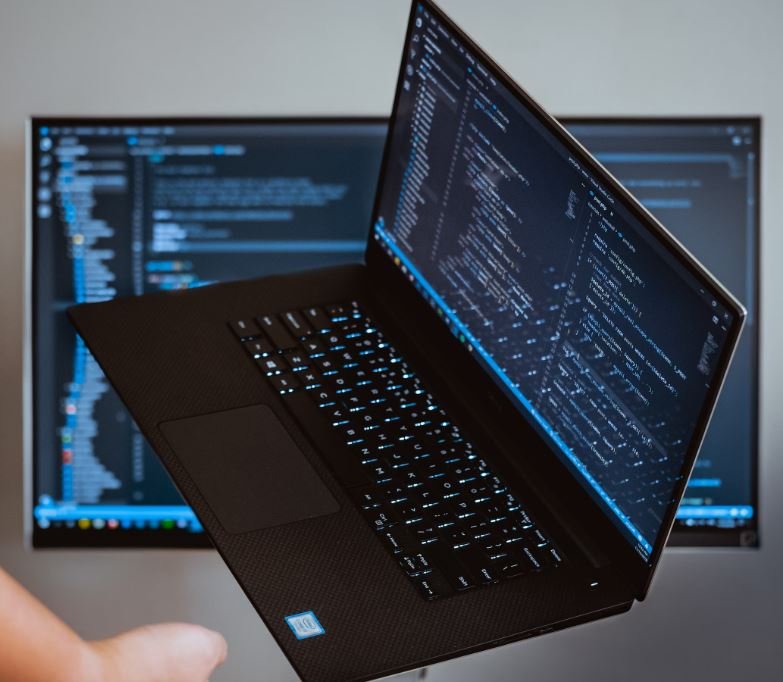Application or App
In today’s technology-driven world, the terms “application” and “app” are often used interchangeably. But what do these terms really mean, and what are the key differences between them? This article will provide a clear understanding of the concepts, their functionalities, and their significance in our daily lives.
Key Takeaways:
- An application, commonly known as software, is a program designed to perform specific tasks on a computer or a mobile device.
- An app, short for application, is a software program specifically developed to run on mobile devices, such as smartphones or tablets.
- Applications are typically multi-functional, versatile, and designed for desktops or laptops, while apps are built with a mobile-first approach, encouraging user engagement on smartphones.
Applications are computer-based programs that allow users to perform various tasks or activities. They are versatile, multi-functional, and provide a wide range of features. Applications are commonly found on desktop or laptop computers and can be installed locally or accessed through the internet. These software programs may include word processors, spreadsheets, graphic designing tools, video editing software, and more. *Over time, applications have become more sophisticated, often integrating cloud-based technologies for enhanced collaboration and accessibility.*
Apps, on the other hand, are software programs developed for mobile devices, predominantly smartphones and tablets. They are designed to run specifically on these devices, utilizing the unique features they offer, such as touchscreens, GPS, cameras, and accelerometers. Apps are usually downloaded from digital distribution platforms, like the Apple App Store or Google Play Store, and can serve a multitude of purposes. *With the rise of smartphones, the development of mobile apps has boomed, revolutionizing how we interact with technology and access information on the go.*
While both applications and apps serve similar purposes by providing users with tools, services, or entertainment, there are a few key differences to consider:
- **Development**: Applications are typically built using programming languages like Java, C++, or Python, while apps are developed using specialized frameworks like Swift for iOS or Kotlin for Android.
- **Design**: Applications often have more complex user interfaces (UI) due to the availability of larger screens and more processing power, while apps prioritize a mobile-friendly UI that is easy to navigate on smaller screens.
- **Distribution**: Applications can be distributed through physical media or downloaded from websites, while apps are primarily distributed through app stores, making them more accessible to a wide range of users.
Table 1: Comparison between applications and apps:
| Aspect | Applications | Apps |
|---|---|---|
| Development | Java, C++, Python, etc. | Swift (iOS), Kotlin (Android), etc. |
| User Interface | Complex, desktop-focused UI | Mobile-friendly, intuitive UI |
| Distribution | Physical media, websites | App stores (Apple App Store, Google Play Store) |
Table 2: Popular application examples:
| Application | Usage |
|---|---|
| Microsoft Office Suite | Word processing, spreadsheets, presentations |
| Adobe Photoshop | Photo editing and graphic design |
| AutoCAD | Computer-aided design and drafting |
Table 3: Popular app examples:
| App | Usage |
|---|---|
| Social networking and communication | |
| Photo and video sharing | |
| Uber | Transportation services |
In conclusion, applications and apps are both vital components of modern technology, enabling us to perform various tasks efficiently and conveniently. While applications cater to desktop and laptop usage with their versatile functionalities, apps are specifically designed for mobile devices, providing a seamless mobile experience. Regardless of the terminology, both applications and apps have revolutionized the way we interact with technology, enhancing productivity and entertainment in our daily lives.

Common Misconceptions
Paragraph 1
One common misconception people have about applications or apps is that they are only useful for entertainment purposes.
- Apps can also be used for productivity and organization.
- Many apps offer educational content and resources.
- There are apps designed for various industries such as healthcare, finance, and communication.
Paragraph 2
Another misconception is that apps are only available for smartphones and tablets.
- Apps can also be developed for desktop and laptop computers.
- Some apps are designed specifically for wearables like smartwatches.
- Web apps are accessed through a web browser and do not require a specific device.
Paragraph 3
Many people believe that apps are always free to download and use.
- Some apps offer a basic free version with limited features and require a paid subscription for access to more advanced features.
- In-app purchases are common in games and utility apps.
- Some apps are entirely paid and need to be purchased upfront before installation.
Paragraph 4
There is a misconception that all apps require an internet connection to function.
- Many apps can operate offline, such as certain games and offline map applications.
- Utility apps like calculators and note-taking apps often work without internet connectivity.
- Some apps have both online and offline functionality, allowing users to choose their preferred mode of usage.
Paragraph 5
Finally, people often assume that app developers have access to users’ personal information.
- App developers must comply with privacy regulations and protect user data.
- Permissions requested by apps are usually necessary for the app’s functionality and do not automatically mean users’ data is being shared.
- Users can typically control the permissions they grant to apps on their devices.

Application or App
In today’s digital era, applications, or apps, have become an integral part of our lives. From organizing our schedules to connecting with loved ones, these technological wonders have revolutionized the way we live and work. In this article, we will explore various aspects of apps through a series of intriguing tables that highlight their impact, usage, and popularity.
Global App Downloads by Category
Table 1 presents the global app downloads by category, shedding light on the preferences of smartphone users worldwide. As of 2021, social media apps take the lead with a staggering 58%, followed by gaming apps at 20%.
| App Category | Percentage of Downloads |
|---|---|
| Social Media | 58% |
| Gaming | 20% |
| Entertainment | 9% |
| Productivity | 7% |
| Utility | 6% |
Time Spent on Social Media Apps
Table 2 delves into the amount of time spent on social media apps per day. Shockingly, the average user spends approximately 2.5 hours daily on these platforms, resulting in a substantial chunk of their waking hours.
| Age Group | Time Spent (hours/day) |
|---|---|
| 13-17 | 3.1 |
| 18-24 | 2.9 |
| 25-34 | 2.6 |
| 35-44 | 2.3 |
| 45-54 | 1.9 |
| 55+ | 1.4 |
Revenue Generated by Mobile Apps
Table 3 provides an overview of the immense revenue generated by mobile apps. In 2020 alone, apps raked in a jaw-dropping $581.9 billion, underlining their profitability and economic significance.
| Year | Revenue (in billions USD) |
|---|---|
| 2017 | 461.7 |
| 2018 | 612.0 |
| 2019 | 461.2 |
| 2020 | 581.9 |
Most Popular Messaging Apps Worldwide
Table 4 showcases the most popular messaging apps globally, allowing users to stay connected with friends and family across the globe. WhatsApp takes the lead with a whopping 2 billion monthly active users, followed by Facebook Messenger and WeChat.
| Messaging App | Monthly Active Users (in billions) |
|---|---|
| 2 | |
| Facebook Messenger | 1.3 |
| 1.2 | |
| Telegram | 0.5 |
| 0.4 |
App Ratings by Category
Table 5 presents the average app ratings by category, providing insights into user satisfaction. Weather apps receive the highest rating, indicating their reliability and accuracy.
| App Category | Average User Rating (out of 5) |
|---|---|
| Weather | 4.7 |
| Health & Fitness | 4.6 |
| News | 4.5 |
| Navigation | 4.4 |
| Finance | 4.2 |
App Store Download Statistics
Table 6 provides download statistics for various app stores, revealing the popularity of these platforms. Google Play leads the race with a massive 108.5 billion downloads, followed by the Apple App Store and the Huawei AppGallery.
| App Store | Number of Downloads (in billions) |
|---|---|
| Google Play | 108.5 |
| Apple App Store | 59.5 |
| Huawei AppGallery | 33.0 |
| Amazon Appstore | 12.8 |
| Samsung Galaxy Store | 10.4 |
Top Grossing Apps
Table 7 showcases the top-grossing apps across platforms, highlighting the immense financial success of these applications. Honor of Kings, a popular online game, dominates the list with a staggering $2.5 billion in revenue.
| App | Revenue (in billions USD) |
|---|---|
| Honor of Kings | 2.5 |
| PUBG Mobile | 1.9 |
| Roblox | 1.8 |
| Pokémon GO | 1.7 |
| Lineage M | 1.7 |
App Downloads by Country
Table 8 displays the top countries for app downloads, indicating the regions where apps have the most impact. China leads the way with an astounding 134 billion downloads, followed closely by India and the United States.
| Country | Number of Downloads (in billions) |
|---|---|
| China | 134 |
| India | 40 |
| United States | 38 |
| Indonesia | 20 |
| Russia | 16 |
App User Retention Rates
Table 9 sheds light on user retention rates for different app categories. Interestingly, food and drink apps have the highest retention rate, indicating their ability to keep users engaged and satisfied.
| App Category | Retention Rate (%) |
|---|---|
| Food & Drink | 30 |
| Health & Fitness | 25 |
| Travel | 20 |
| Shopping | 15 |
| Gaming | 10 |
App Production Costs
Table 10 outlines the average production costs for developing various types of apps. It is interesting to note that gaming apps are the most expensive to produce, while utility apps tend to have lower production costs.
| App Category | Average Production Cost (in USD) |
|---|---|
| Gaming | 200,000 |
| Entertainment | 150,000 |
| Productivity | 100,000 |
| Utility | 80,000 |
| E-commerce | 50,000 |
From the diverse range of data presented in the aforementioned tables, it is evident that applications have transformed the way we interact, entertain, and conduct business. With billions of downloads, extensive revenue generation, and high user retention rates, apps continue to shape our digital landscape. As technology evolves, these tables serve as a testament to the unparalleled impact and promising future of the app industry.
Frequently Asked Questions
How do I install the application?
To install the application, follow these steps:
- Go to the app store on your device.
- Search for the application’s name.
- Tap on the app’s icon in the search results.
- Click the “Install” button.
- The app will start downloading and installing on your device.
Can I use the application on multiple devices?
Yes, you can use the application on multiple devices as long as you are signed in with the same account on each device.
How do I update the application?
To update the application, follow these steps:
- Go to the app store on your device.
- Search for the application’s name.
- If an update is available, you will see an “Update” button next to the app’s icon.
- Click the “Update” button.
- The app will start downloading and updating on your device.
Is the application available for both Android and iOS?
Yes, the application is available for both Android and iOS devices. You can download it from the respective app stores.
How can I contact the support team?
To contact the support team, you can reach out to us through the “Contact Us” section in the application. Alternatively, you can send an email to support@applicationname.com.
What should I do if the application crashes or freezes?
If the application crashes or freezes, try the following troubleshooting steps:
- Close the app completely and reopen it.
- Restart your device and open the app again.
- If the issue persists, uninstall and reinstall the application.
- If the problem still persists, please contact our support team for further assistance.
Can I customize the settings in the application?
Yes, you can customize certain settings in the application according to your preferences. These settings usually include theme selection, notification preferences, and privacy settings.
Is my personal data secure in the application?
We prioritize the security and privacy of our users’ personal data. We have implemented robust measures to safeguard your information. Please refer to our Privacy Policy for detailed information on how we handle and protect your data.
What should I do if I forget my password?
If you forget your password, you can reset it by following these steps:
- On the login screen, click on the “Forgot Password” link.
- Enter your registered email address.
- You will receive an email containing instructions on how to reset your password.
- Follow the provided instructions to set a new password.
How do I uninstall the application?
To uninstall the application, follow these steps:
- Go to the app menu on your device.
- Long-press on the application’s icon.
- A delete or uninstall option will appear, depending on your device.
- Tap on the delete/uninstall option and confirm the action.
- The application will be removed from your device.





